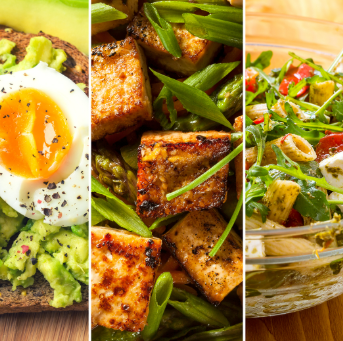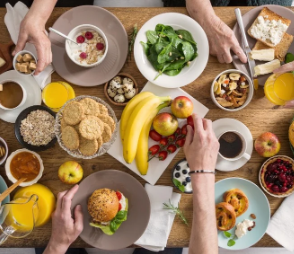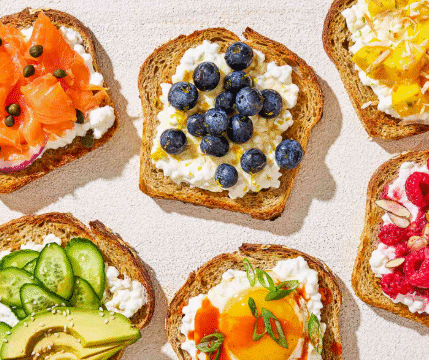Breakfast is often called the most important meal of the day, and for good reason. The foods you eat in the morning set the stage for your energy levels, focus, and mood throughout the day. While many people focus on what to eat, few pay attention to how foods are combined. Pairing foods correctly can make a big difference in how your body processes nutrients, how long you stay full, and how steadily your energy lasts. The goal of an energizing breakfast is to fuel your body without sudden highs and lows in energy, and that begins with smart food combinations.
An energizing breakfast depends on balance. The right pairings bring together carbohydrates for quick energy, protein for endurance, and healthy fats for sustained focus. When these three nutrients work together, they help stabilize blood sugar and prevent the mid-morning fatigue that can follow a breakfast made mostly of sugar or refined grains. To create that balance, think about building your breakfast as a combination of complementary foods, where each ingredient contributes something unique to your overall vitality.
A classic example of food pairing for energy is whole-grain toast with nut butter. The complex carbohydrates in the toast provide a steady release of energy, while the protein and fat in the nut butter slow digestion, keeping you full longer. This pairing helps prevent the energy spikes and crashes that often happen after eating sugary cereals or pastries. Adding a few slices of banana on top introduces natural sweetness and extra potassium, supporting muscle function and hydration. With just a few simple ingredients, you create a complete breakfast that energizes without overwhelming your system.
Another excellent pairing is yogurt with fruit and seeds. Yogurt is rich in protein and calcium, which support muscle and bone health, while fruits like berries or apples supply antioxidants, fiber, and natural sugars for quick energy. When you add a sprinkle of chia seeds or flaxseeds, you boost the meal with omega-3 fatty acids and additional fiber. This combination not only nourishes your body but also promotes steady digestion and concentration throughout the morning. Choosing plain yogurt instead of sweetened varieties helps control added sugars, giving you a naturally balanced flavor and energy profile.
For those who prefer a warm breakfast, pairing eggs with vegetables and whole grains is both satisfying and powerful. Eggs provide high-quality protein and important nutrients like vitamin B12 and choline, which are essential for brain function. Mixing in vegetables such as spinach, peppers, or mushrooms adds fiber, vitamins, and minerals that contribute to lasting energy. Serving this with a side of whole-grain toast or a small serving of brown rice creates a balanced meal that keeps you fueled for hours. This combination is especially helpful on busy mornings when you need sustained focus and stamina.
Smoothies are another great way to practice smart food pairing. A smoothie becomes truly energizing when you include a mix of macronutrients. A good base might include a banana or a handful of oats for carbohydrates, a scoop of protein powder or Greek yogurt for protein, and a small serving of nut butter or avocado for healthy fats. Adding leafy greens like spinach can enhance nutrient density without altering the taste. Blending these ingredients together produces a meal that is light yet satisfying, ideal for parents, professionals, or students who need a quick breakfast that travels easily.
Oatmeal, a timeless favorite, also benefits from thoughtful pairing. Oats alone are a good source of complex carbohydrates and fiber, but pairing them with protein and fat makes them even more effective for energy stability. Cooking oats with milk instead of water adds protein and calcium. Topping the bowl with nuts, seeds, or a spoonful of nut butter adds healthy fats that help extend satiety. Fresh fruit like blueberries or sliced apples introduces antioxidants and natural sweetness, making the meal not only nourishing but also enjoyable. This type of breakfast can keep you alert and satisfied until lunchtime without relying on caffeine or sugar.
When pairing foods for an energizing breakfast, it helps to avoid combinations that are too heavy or too simple. Meals that contain mostly refined carbs, like white bread with jam or sugary cereal with milk, can cause a quick burst of energy followed by a slump. On the other hand, breakfasts that are too high in fat without enough carbohydrates, such as only bacon and eggs, can feel sluggish and slow to digest. The secret lies in finding a middle ground where your body receives both immediate and lasting fuel.
If you enjoy something sweet in the morning, fruit-based combinations can work beautifully when balanced with protein and fat. For example, pairing apple slices with cheese or peanut butter gives you fiber, vitamins, and protein all in one. The sweetness of the fruit satisfies your palate while the protein and fat from the cheese or nuts provide endurance. Similarly, a fruit and nut combination, such as a small bowl of mixed berries with a handful of almonds, creates a refreshing and energizing option that is quick to prepare and easy to digest.
Hydration also plays a role in energizing breakfast pairings. Pairing your meal with a glass of water, herbal tea, or even milk helps your body process nutrients more efficiently. Dehydration can often feel like fatigue, so starting your day with fluids enhances the benefits of your food. If you prefer coffee, enjoying it after eating rather than on an empty stomach helps prevent jitteriness and supports steadier energy. Combining hydration with nutrient-rich foods creates a complete foundation for your day.
Meal timing and portion balance matter as well. Eating breakfast within an hour of waking up helps replenish glycogen stores and jumpstarts metabolism. However, it is not just about eating early—it is about eating smart. Instead of a single large meal, you can enjoy a moderate breakfast and a small mid-morning snack if your schedule requires extra fuel. Pairing a hard-boiled egg with fruit or whole-grain crackers can bridge the gap between breakfast and lunch without overloading your system.
Another useful approach to pairing foods is to think in terms of color and variety. Brightly colored foods often contain different vitamins and antioxidants that support overall health and energy. Pairing green vegetables with orange fruits or combining grains with nuts and seeds ensures that you are covering a broad range of nutrients. This natural diversity not only keeps breakfast visually appealing but also maximizes its energizing effects.
Ultimately, the art of pairing foods for an energizing breakfast comes down to creating balance and harmony. Every ingredient should play a role—some providing quick energy, others helping you stay full, and others supporting mental clarity. Over time, these thoughtful choices make a noticeable difference in how your mornings feel. You will find yourself more focused, more stable in mood, and better prepared to handle the day’s demands.
Starting your day with well-paired foods is an act of self-care that pays off in both body and mind. It shows that energy does not come from caffeine or convenience alone, but from giving your body the right combination of nutrients to perform at its best. Whether you enjoy a bowl of oatmeal with nuts and fruit, a smoothie with greens and yogurt, or eggs with whole-grain toast and vegetables, each pairing is an opportunity to build lasting vitality. With a little attention to balance and variety, breakfast becomes not just the first meal of the day, but a daily investment in your long-term energy and well-being.






